Apart from Southern White Rhinos, we protect a large variety of premium game species at Rockwood.
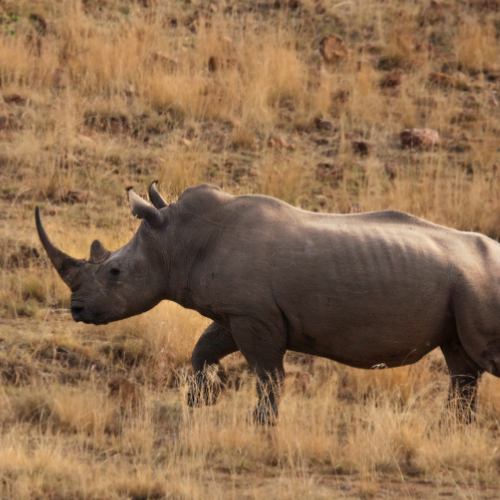
SOUTHERN WHITE RHINO
The White Rhino or Square Lipped Rhino is the largest of all species. It has a noticeable hump on the back of its neck and stumpy feet.
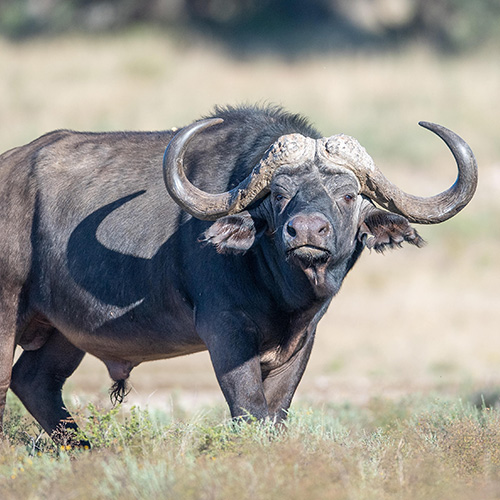
Cape Buffalo
These large cow-like animals are widely regarded as one of the most dangerous and powerful animals in Africa.
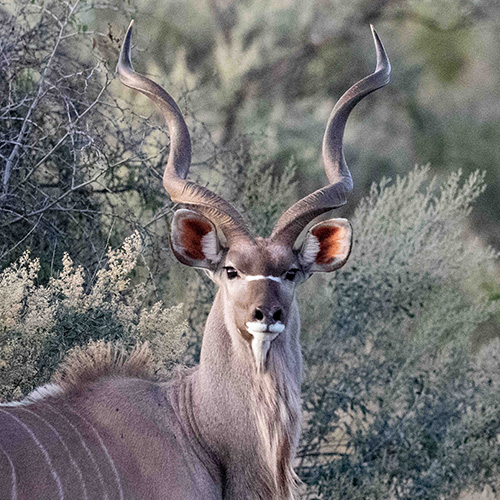
KUDU
These woodland antelope are abundant in the Northern Cape. The name 'Kudu' stems from the indigenous Khoikhoi.
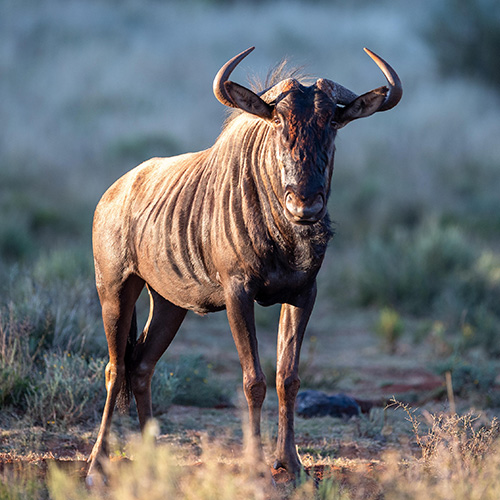
BLUE WILDEBEEST
Blue Wildebeest (or Brindled Gnu) are so called due to their silvery-blue sheen of fur, which varies from a greyish colour to brown.
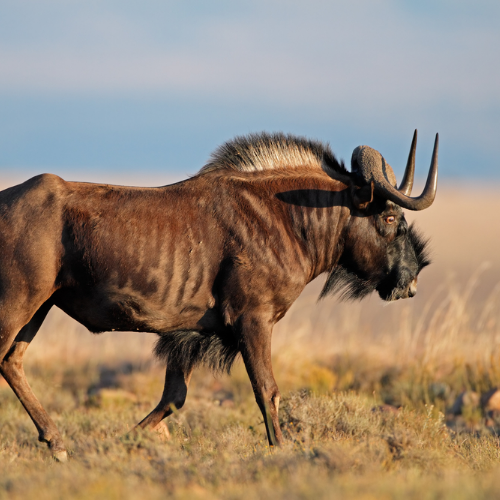
BLACK WILDEBEEST
These impressive, large antelope are beautifully dark brown, with an impressive, long black mane and cream bushy tail.
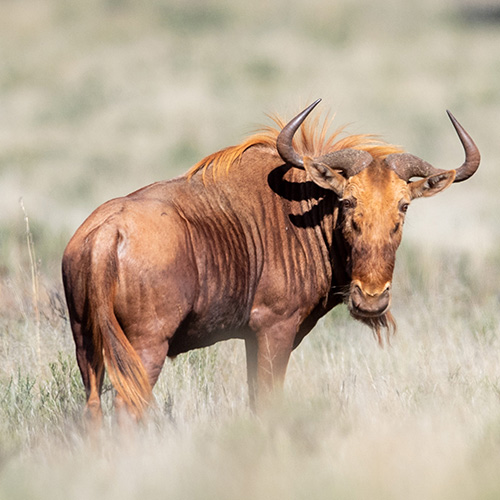
GOLDEN WILDEBEEST
The Golden Wildebeest is a rare mutation of the Blue Wildebeest. They are very muscular with a long golden beard.
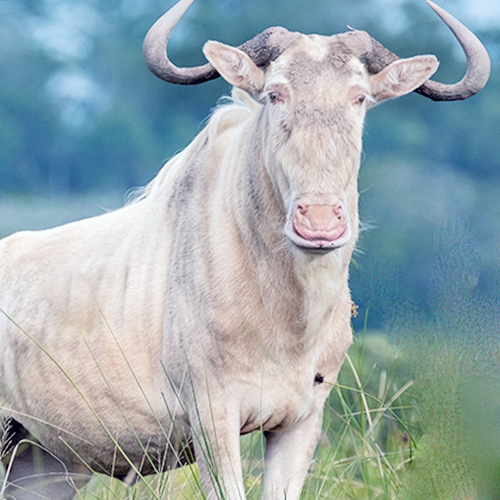
ROYAL WILDEBEEST
The Royal Wildebeest (Ghost Wildebeest) is the most rare color variant of the Blue Wildebeest and quite an impressive animal.
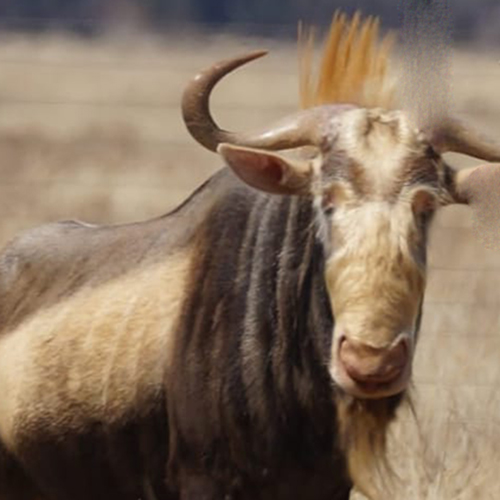
KING WILDEBEEST
The King Wildebeest is a color variant of the Blue Wildebeest, with a light face, and almost cream beard, mane, and tail.
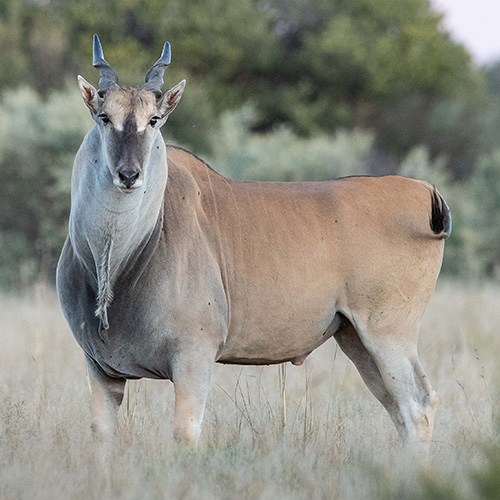
ELAND
The Eland, also known as the Southern Eland or Eland Antelope, is a plains antelope that is commonly found in South Africa.
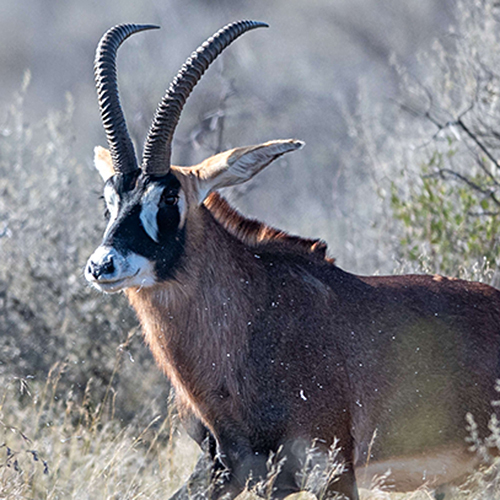
ROAN
Roan are found from Western to Southern Africa. Named for its roan colour, it has a light underbelly, white eyebrows and red nostrils.
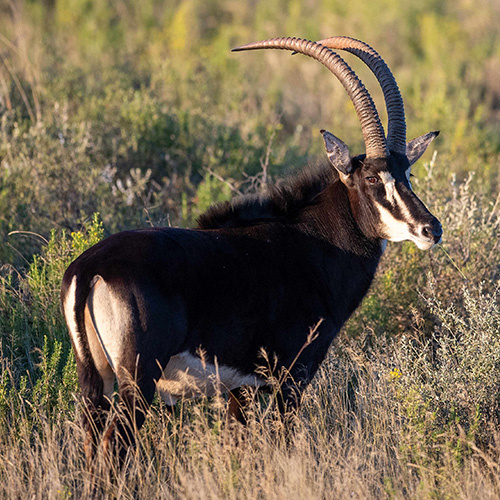
SABLE
Found from East to Southern Africa, this antelope has a long face, short neck, dark mane, and very impressive ringed horns.
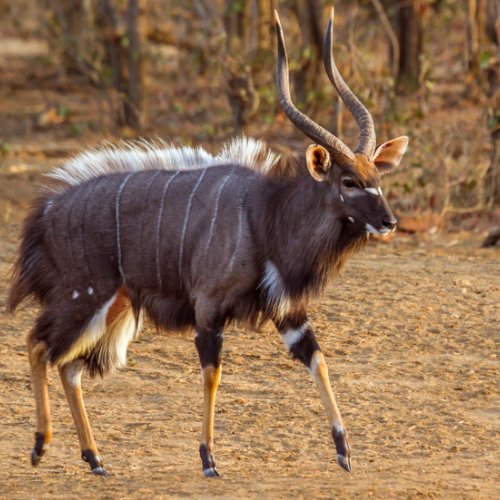
NYALA
Considered the most sexually dimorphic antelope of all species, only males have spiral-shaped horns.
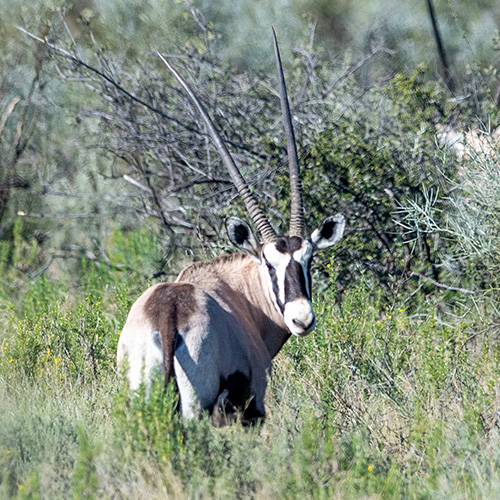
ORYX (GEMSBOK)
A beautiful, large type of antelope that is native to South Africa. Light brownish-grey, with light patches near the rear of the rump.
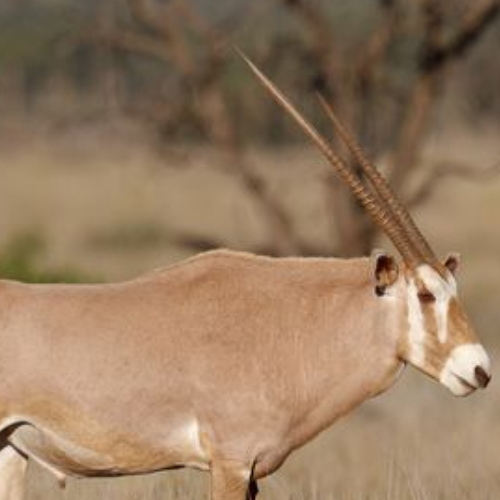
GOLDEN GEMSBOK
A mutation in colour from the regular Common Gemsbok. They live primarily in open ground, and can survive in the harshest environments.
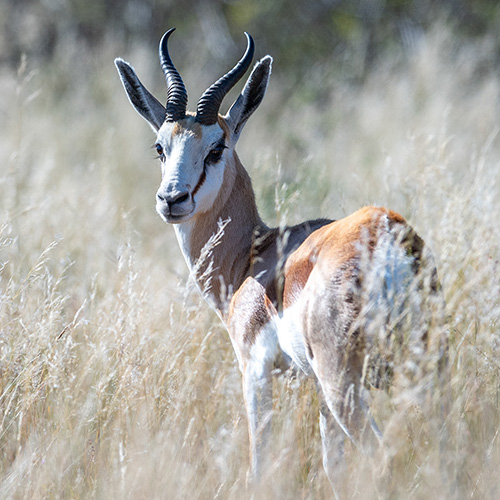
SPRINGBOK
The Springbok is a small antelope, reddish-brown with a pale underside. There is a dark brown stripe on each flank.
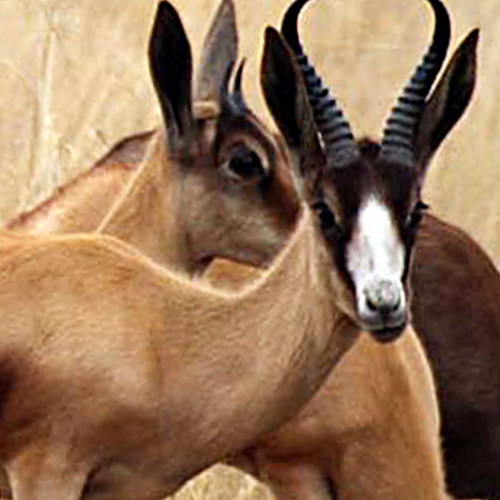
COPPER SPRINGBOK
The Copper Springbok is a special color variant of the common Springbok, developed by careful, selective breeding.
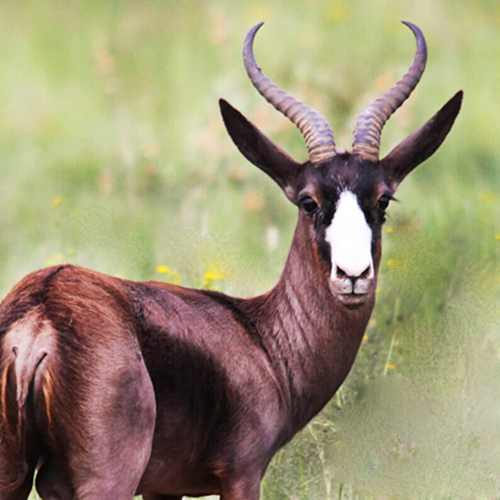
BLACK SPRINGBOK
The Black Springbok's color varies between shades of black, due to a regressive gene of the common Springbok.
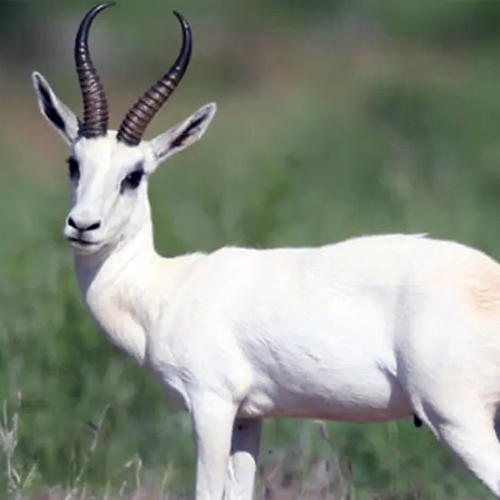
WHITE SPRINGBOK
The White Springbok isn't an albino, but a color variant. It's predominantly white, but can also be slightly darker.
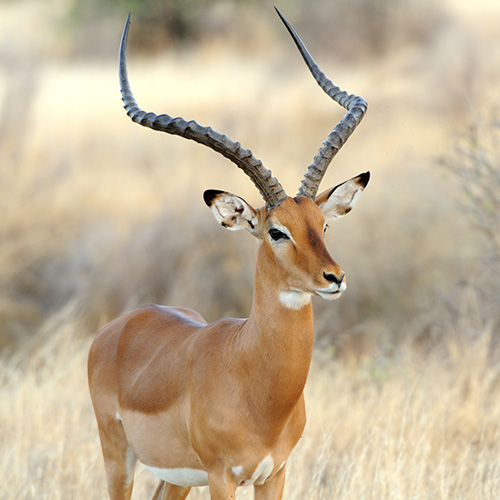
IMPALA
The Impala or Rooibok is a Sub-Saharan African antelope and is commonly included in the itinerary of every hunter's expedition.
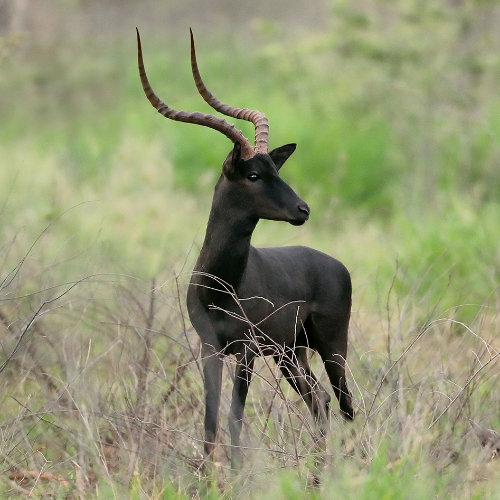
BLACK IMPALA
Black Impala are very rare and highly prized by hunters in Africa. They are highly alert animals and make for excellent trophy hunting.
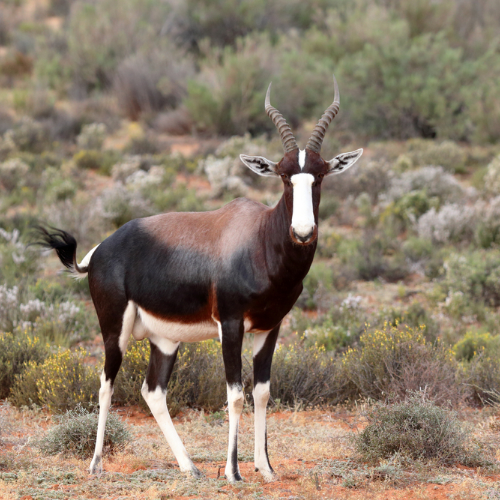
BONTEBOK
A medium-sized antelope, generally dark brown with lyre-shaped horns, a black-tipped tail, and white blaze on its face.
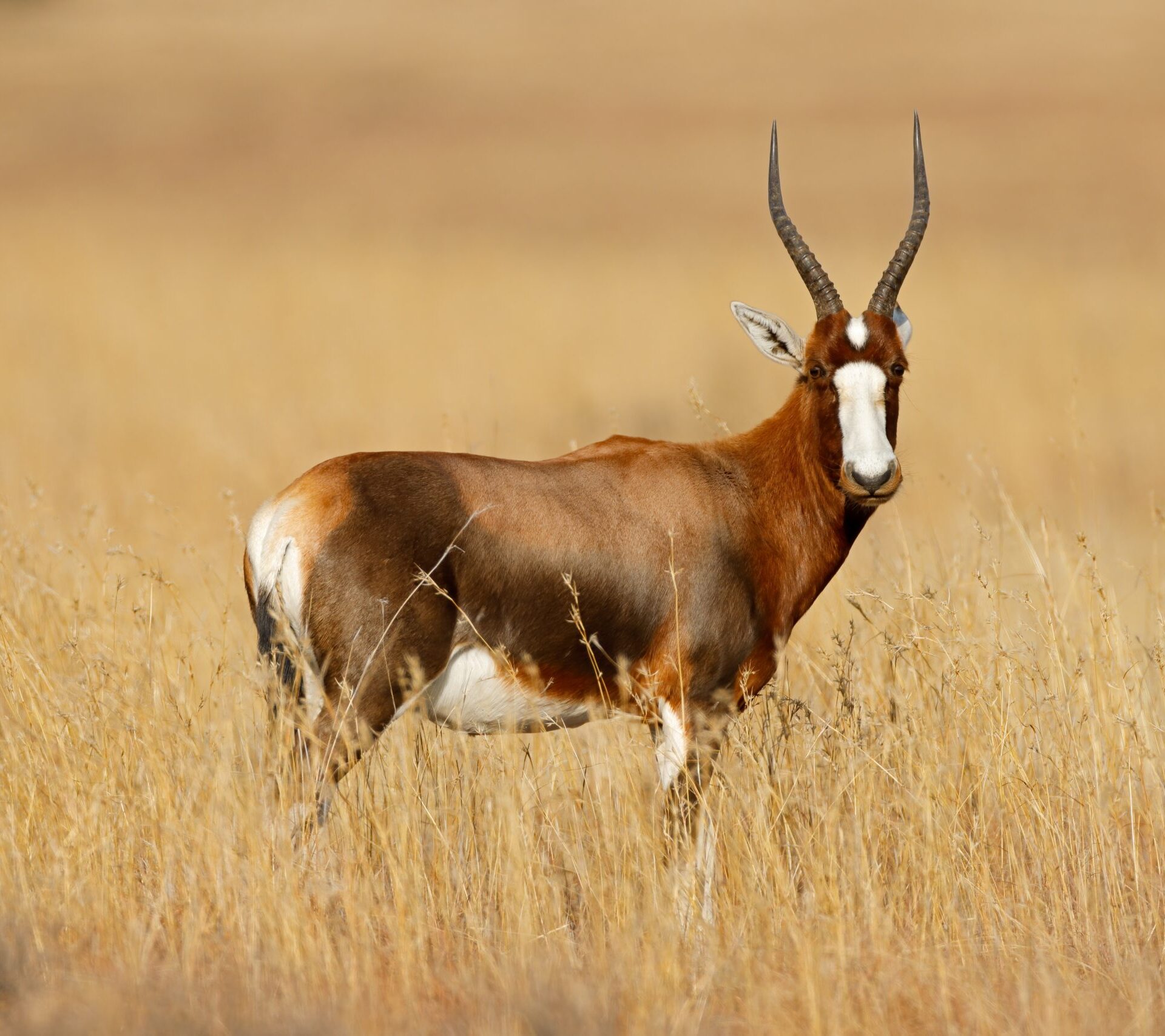
BROWN BLESBUCK
Not to be mistaken for a Bontebok, these antelope inhabit open grasslands and have a distinctive white face and forehead.
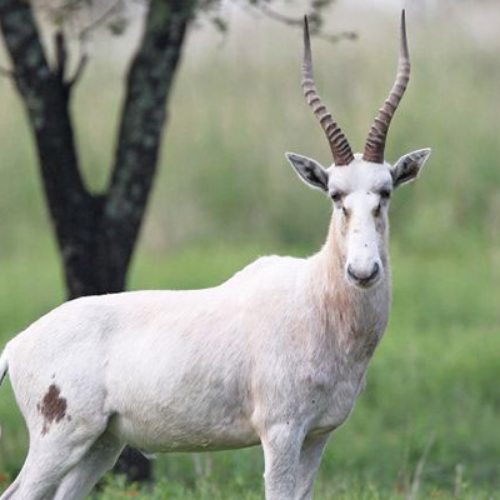
WHITE BLESBUCK
White Blesbuck live in the open plains of South Africa. They are a colour variation of the Brown Blesbuck and not a subspecies.
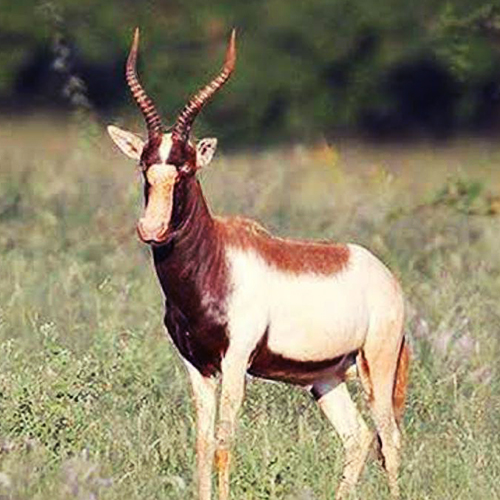
SADDLE BACK BLESBUCK
The Saddleback Blesbuck has a white face, reddish-brown coat, and white belly and rump. Its horns curve backwards.
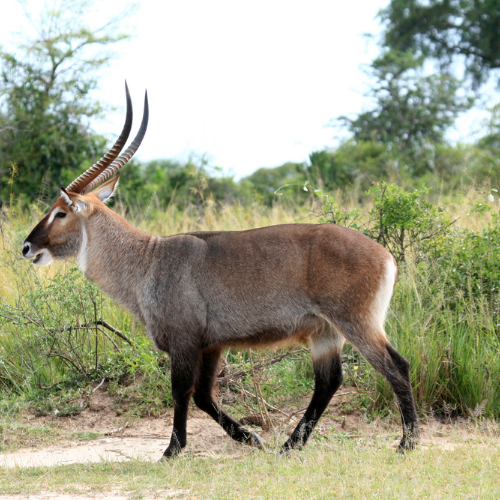
WATERBUCK
A large antelope found close to water. They stay close to rivers, lakes and valleys, even fleeing into the water to escape threats.
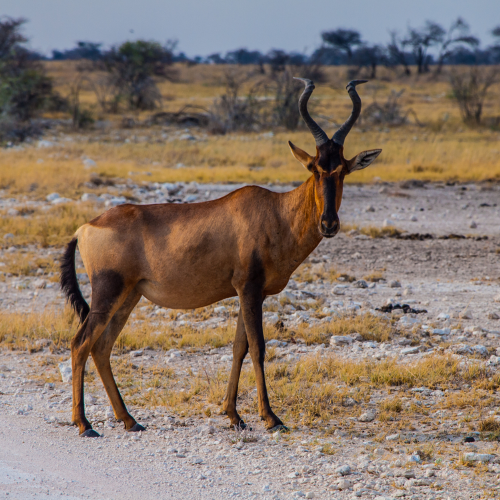
RED HARTEBEEST
A large nomadic antelope with a longer face than other species, a distinctive red-brown coat, and contrasting white belly and rump.
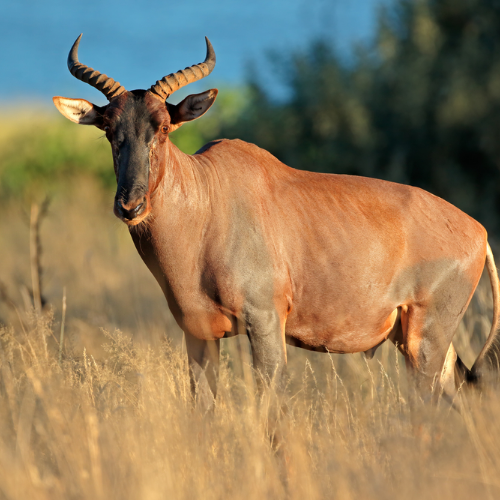
TSESSEBE
Common Tsessebe are large grazers and among the fastest antelopes in Africa. They can run at speeds up to 55 mph.
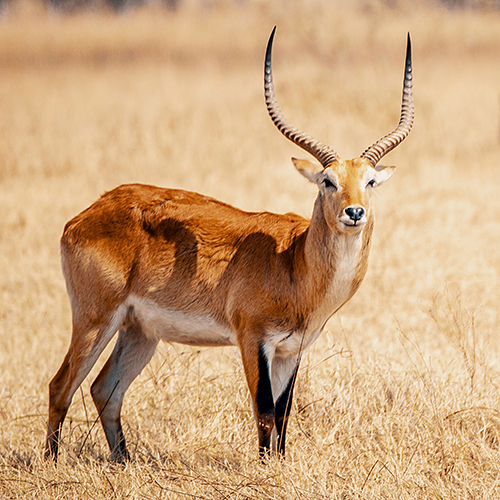
RED LECHWE
The Lechwe is a medium-size, rich red-brown antelope with long horns, that is closely related to the Waterbuck.
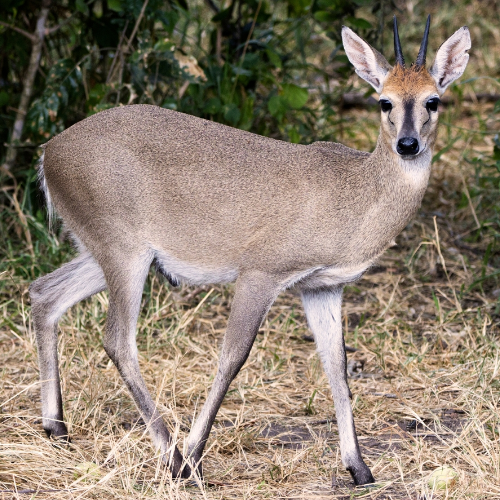
GREY DUIKER
The Grey Duiker is a small, shy antelope with white underparts. Unlike most antelope, females are larger than males.
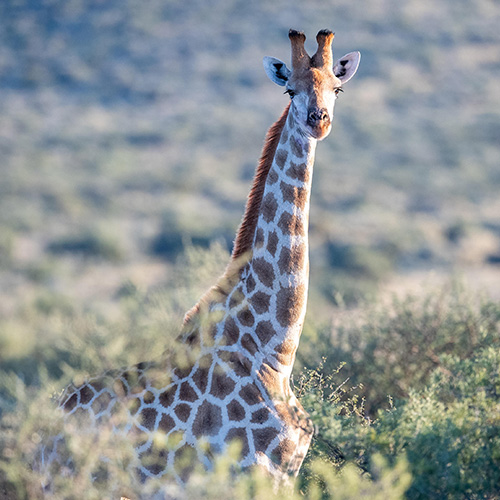
GIRAFFE
Giraffes are the world’s tallest living animals, easily identified due to their exclusively long neck and pelage markings.
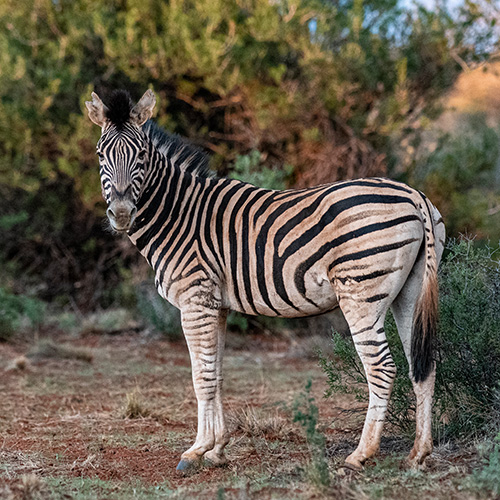
ZEBRA
The Zebra has three species in the wild and is part of the Equidae family: well-known and prized for its black-and-white-striped coat.
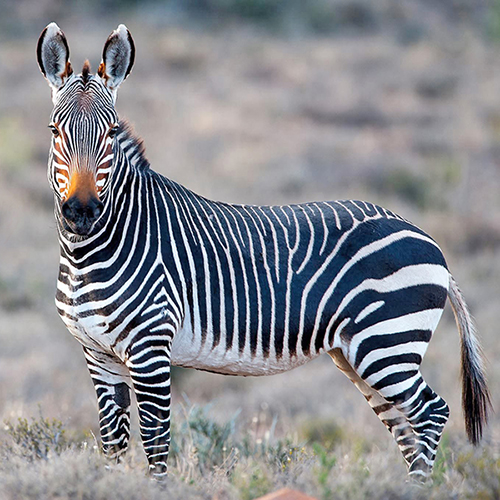
HARTMAN ZEBRA
The Hartman's zebra is a subspecies of the mountain zebra, easily distinguished by its dewlaps and lack of stripes on its belly.
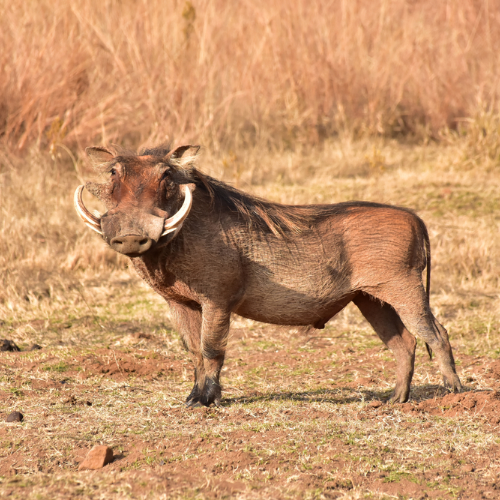
WARTHOG
A notoriously aggressive wild pig species with four impressive tusks, two razor-sharp lower canines, and two curving uppers.
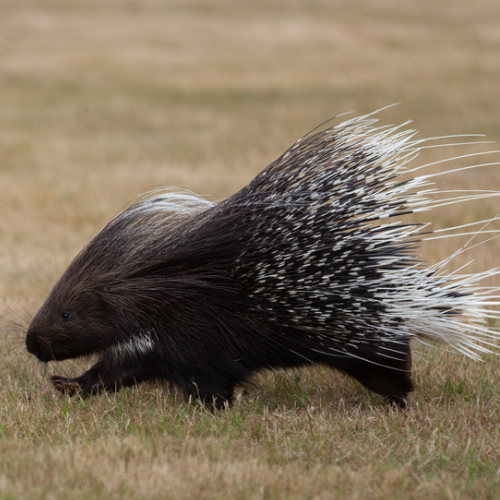
PORCUPINE
Large nocturnal rodents found across most of Africa. They have clusters modified hairs (spines or quills) on their back, sides, and tail.
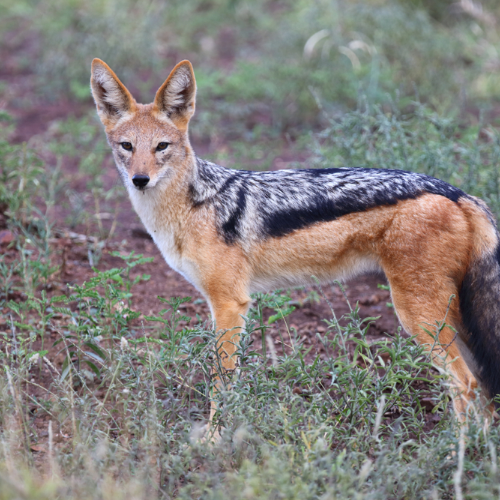
JACKAL
The jackal is a medium-sized member of the canine family. Opportunistic in nature, they hunt small mammals, birds and reptiles.
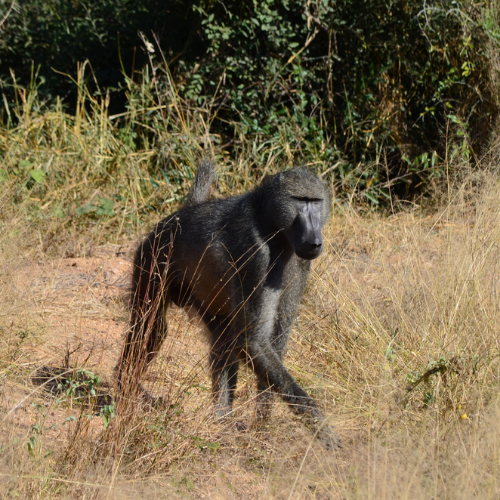
BABOON
With a dog-like face and big, prominent canines, the Cape Baboons are the world's largest and strongest monkeys.
